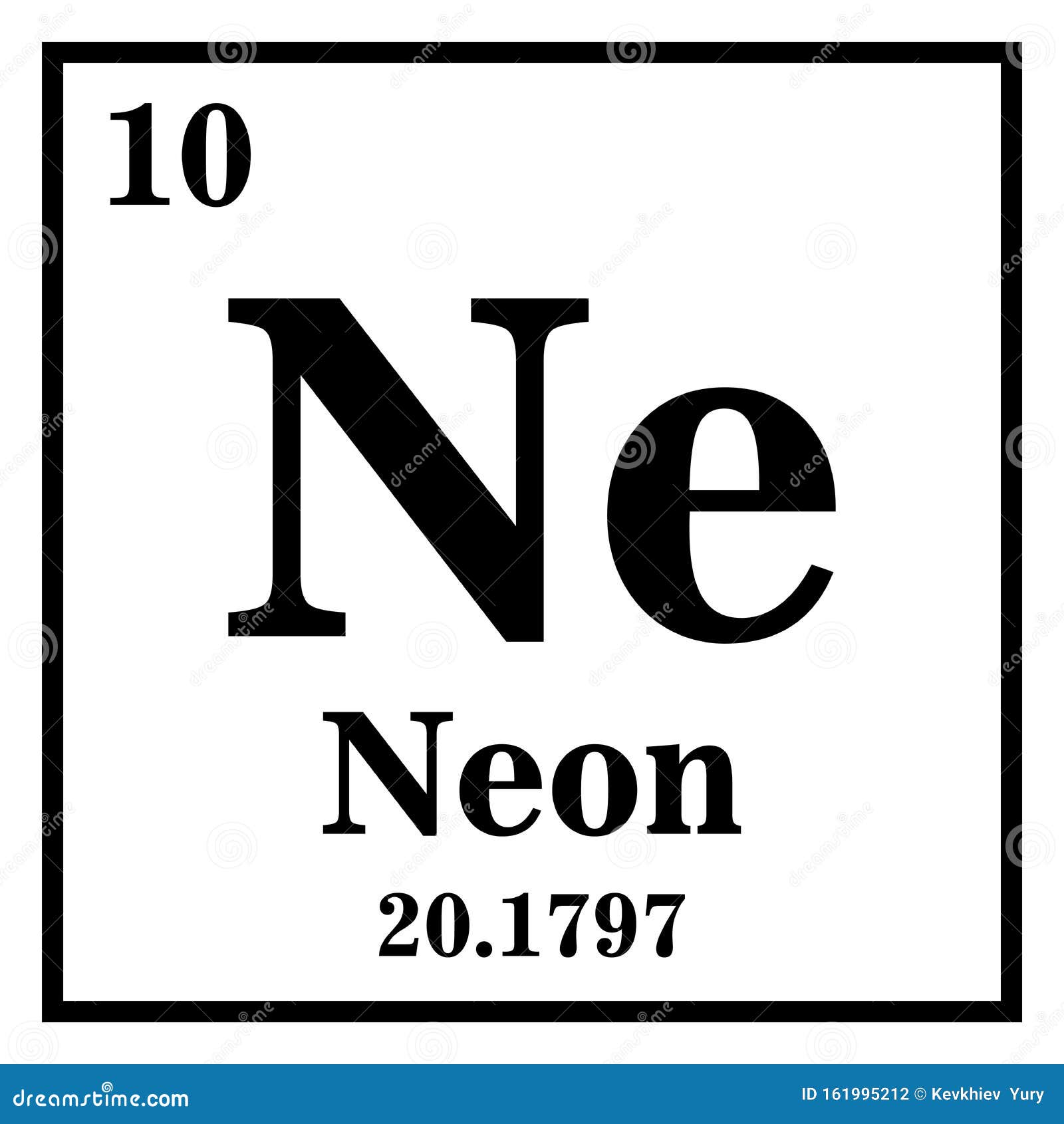

In some cases, the first letter together with some other letter from their name was used, particularly when their first two letters had already been allocated to another element.

Neon and helium are used in making gas lasers. Most chemical elements are represented symbolically by two letters, generally the first two in their name.
#Ne element symbol tv#
UsesĪlthough neon advertising signs account for the bulk of its use, neon also functions in high-voltage indicators, lightning arrestors, wave meter tubes, and TV tubes. Of all the rare gases, the discharge of neon is the most intense at ordinary voltages and currents. It is compact, inert, and is less expensive than helium when it meets refrigeration requirements. Travers 1898 (England) Electron Configuration: He. It has over 40 times more refrigerating capacity per unit volume than liquid helium and more than three times that of liquid hydrogen. Atomic Number: 10 Symbol: Ne Atomic Weight: 20.1797 Discovery: Sir William Ramsey, M.W.

Explanation: The electronic configuration shown neon have total number electron. In a vacuum discharge tube, neon glows reddish orange. The given electronic configuration of neon ( Ne ) is 1 s A 2 2 s A 2 2 p A 6. The ions, Ne+, (NeAr)+, (NeH)+, and (HeNe+) are known from optical and mass spectrometric studies. Symbol: Ne Atomic Number: 10 Atomic Mass: 20.1797 amu Melting Point: -248.6 C (24.549994 K, -415.48 F) Boiling Point: -246.1 C (27.049994 K, -410.98 F) Number of Protons/Electrons: 10 Number of Neutrons: 10 Classification: Noble Gas Crystal Structure: Cubic Density 293 K: 0. It is still questionable if true compounds of neon exist, but evidence is mounting in favor of their existence. Neon is a very inert element, however, it has been reported to form a compound with fluorine. Natural neon is a mixture of three isotopes. It is obtained by liquefaction of air and separated from the other gases by fractional distillation. It is also used to remove sulfur from fuels during the oil-refining process. Neon is a rare gaseous element present in the atmosphere to the extent of 1 part in 65,000 of air. In the chemical industry it is used to make ammonia for agricultural fertiliser (the Haber process) and cyclohexane and methanol, which are intermediates in the production of plastics and pharmaceuticals. Discovered by Ramsay and Travers in 1898.


 0 kommentar(er)
0 kommentar(er)
